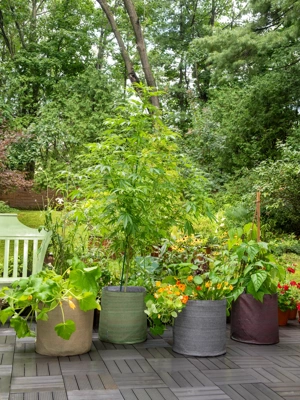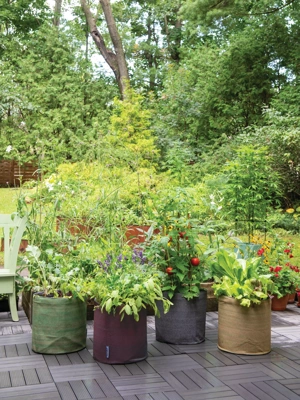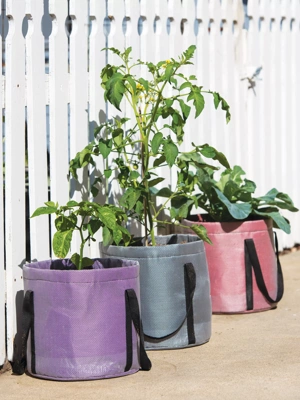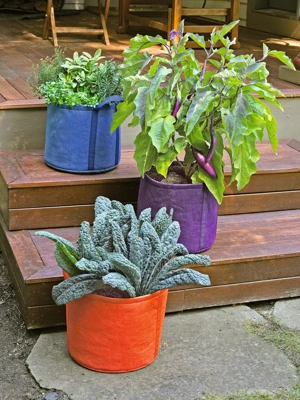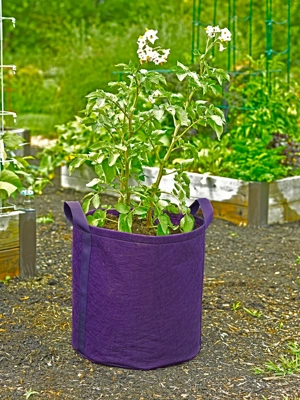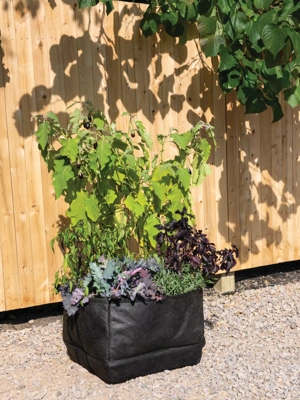Why Our Grow Bags are Better
We started with an ancient idea ...

Along with pots for storing and cooking food, archeologists often uncover containers that were used to grow flowers or vegetables. But not all early pots were clay; woven bags and baskets were used to grow plants and transport rare specimens. Greek townhouses featured rooftop gardens — permanent brick enclosures that apparently held woven inserts that could be easily moved or replaced. In ancient Egypt, "basket gardening" was so important that one noblewoman required her gardener to weave "earth-baskets" in the evenings, thus setting the pattern for the overworked hired gardener.
More recently, thrifty British gardeners came up with a twist on the technique: they grow their vegetables directly in bags of potting soil. They lay the bags down flat, cut a few holes in the "top," and plant. It's a curious sight: row after row of plastic bags sprouting beans and tomatoes.
This growing method has its drawbacks. Plastic bags are tricky to water. Once wet, they retain water and heat, turning the soil into a swampy, unhealthy mess. The biggest problem, though, is soil depth — a few inches of soil is adequate for salad greens, but not enough to grow a healthy, productive tomatoes.
To make a better growing bag, we started with the fabric, and found a very durable, double-layer polypropylene used in landscaping. The fabric has a soft, felt-like texture that allows "root pruning" of the plants. The roots grow to the edge of the bag and are "pruned," making for a more extensive root system. Plus, there's no root circling as you'd have in a pot or planter.
The BPA-free fabric is breathable, too, and respiration is critical to plant health. "Exhaling" excess moisture prevents root rot, and the movement of water through the soil helps carry the nutrients plants need.
Our grow bags are more durable with reinforced seams and stitched corners. With care you can get several seasons out of them, making them an even better value.
Best of all, we've created several sizes of Grow Bags, designed to suit specific crops. You'll use only as much soil as you need, and enjoy the maximum harvest in the minimum space.
Last updated: 08/22/2023
Print this Article:
Related items
Get the Dirt
Stay up to date on new articles and advice. Please fill out the information below.


